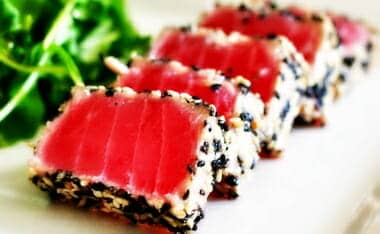
The entire post is at What’s Up With That. It is semi-technical, but the last few paragraphs explain it well. And you never really ask “what a ‘cultural’ fact” dished out to you is based on. In this case, 14-fish!
…A couple of points stand out here. First, their 22 kg cutoff seems way too low. According to their own data, there is little difference between mercury levels in tuna up to about 40 kg. This means that there will be errors in the adjusted mercury for fish less than 40 kg or so. Second, most of the blue 2008 data is low-weight fish (blue dots) … and as a result, the adjusted mercury levels of the 2008 data will be overestimated. Finally, this preponderance of light weight fish in 2008 is also the reason that the mercury adjustment, rather than reducing the spread of the 2008 data, actually increased the spread of the data.
So to summarize. The 1971 mercury data is statistically indistinguishable from the 1998 data, and the fish have about the same weight distribution. Together, these two groups comprise 94% of the data. They show no change in mercury levels over that twenty-seven year period.
They’ve built their entire claim of an increase in mercury on a mere 14 fish, 6% of the data, which are significantly lighter in weight than the other 94% of the sample. And as Figure 5 shows, it is likely that their adjusted mercury content is overestimated. Fourteen small-fry fish are all they have to hold up their claims? Really? This is almost to the level of the One Yamal Tree farrago.
And in any case, the idea that there would be absolutely no increase in mercury levels for nearly thirty years and then the mercury would jump significantly over the next ten years doesn’t pass the laugh test.
An example of the media taking this and running is over at CNBC: The popular fish that we may be making poisonous
